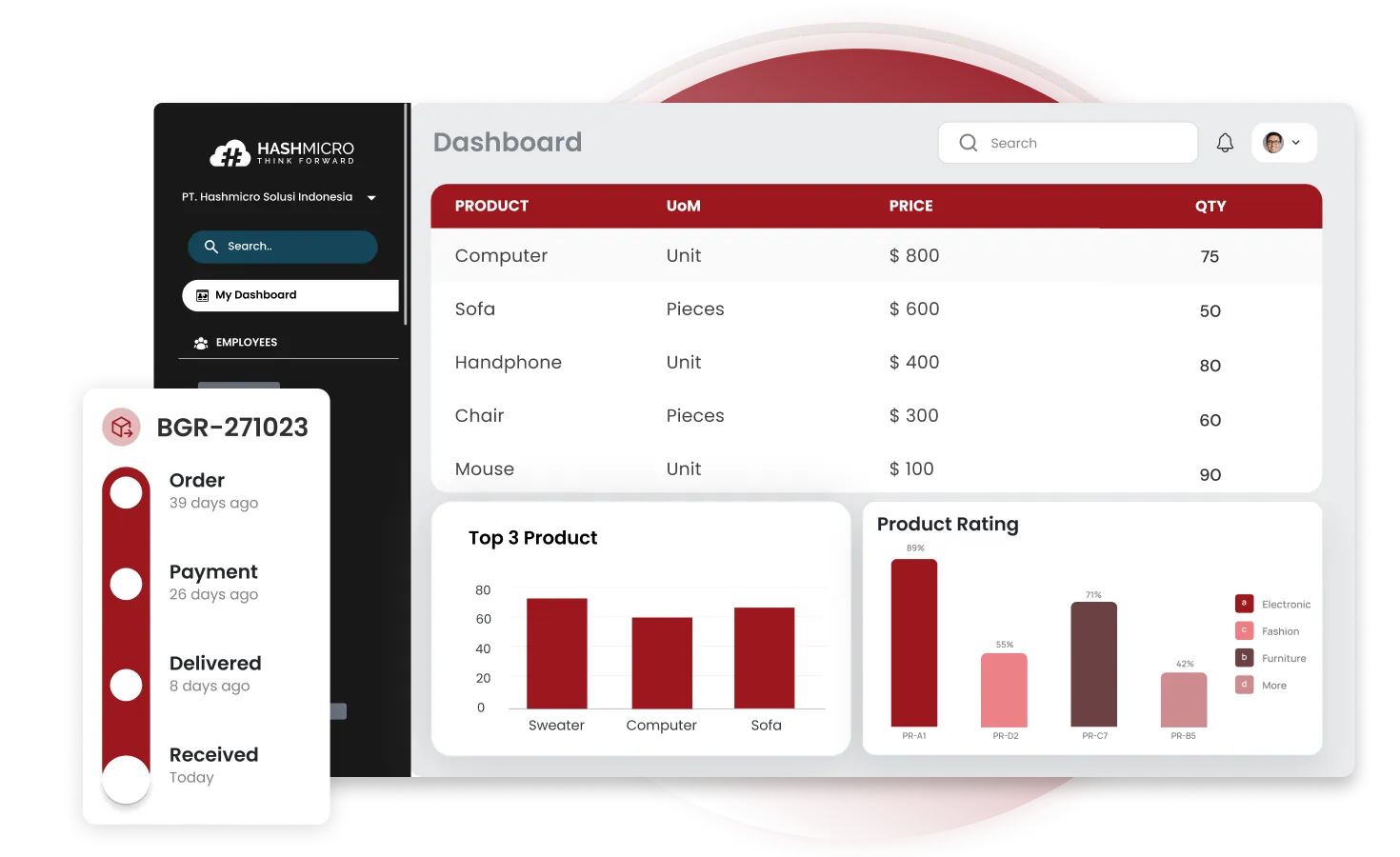In today’s highly competitive market, supply chain optimization is a critical factor in achieving business success. By effectively managing your supply chain, you can maximize efficiency, minimize costs, and gain a competitive edge. This article explores the transformative world of supply chain optimization and how it can elevate your business to new heights.
Supply chain optimization involves implementing robust strategies and best practices in supply chain management and logistic optimization. It focuses on streamlining processes, improving collaboration, and leveraging cutting-edge technologies to enhance operational efficiency.
By optimizing your supply chain, you can reduce lead times, enhance inventory management, and improve overall operational performance. Data-driven decision making plays a vital role in this process, enabling organizations to make informed decisions based on real-time insights and analytics.
Collaborative partnerships with suppliers and distributors are also essential for a synchronized supply chain ecosystem that adapts quickly to changes and ensures efficiency and responsiveness.
In the following sections, we will delve deeper into the key pillars of supply chain optimization, the benefits it brings to your business, the techniques you can employ, and the software solutions available to help you achieve optimal results.
Table of Content:
Table of Content
The Foundation of Supply Chain Optimization
Supply chain optimization is the cornerstone of operational efficiency and effective inventory management. By maximizing efficiency and minimizing costs throughout the entire supply chain lifecycle, businesses can streamline processes, enhance collaboration, and leverage cutting-edge technologies to stay competitive in the market.
Optimizing the supply chain involves a holistic approach that encompasses various functions, including procurement, manufacturing, transportation, and distribution. By implementing efficient processes and optimizing workflows, organizations can reduce lead times, improve operational performance, and enhance inventory management.
One key aspect of supply chain optimization is operational efficiency. By identifying and eliminating bottlenecks, minimizing waste, and implementing lean principles, businesses can optimize their operations and achieve higher productivity levels. Improved operational efficiency allows organizations to deliver products and services to customers faster, leading to increased customer satisfaction and loyalty.
Another critical element of supply chain optimization is inventory management. By implementing robust inventory tracking systems, demand forecasting models, and efficient storage practices, organizations can minimize stockouts, reduce carrying costs, and ensure optimal levels of inventory. Effective inventory management enables businesses to balance supply and demand, avoid excess inventory, and improve cash flow.
Key Pillars of Success in Supply Chain Optimization
Data-driven decision making, supply chain analytics, and collaborative partnerships are the key pillars that drive success in supply chain optimization. By embracing these pillars, businesses can unlock the potential for increased efficiency, improved forecasting, and a more resilient supply chain.
Data-driven decision making is essential in today’s increasingly complex business landscape. By harnessing the power of data and analytics, organizations can gain valuable insights into customer demand, market trends, and internal operations. This enables them to make informed decisions that optimize the entire supply chain, from procurement to delivery.
Supply chain analytics plays a vital role in optimizing processes, identifying bottlenecks, and uncovering opportunities for improvement. Through advanced analytics techniques, businesses can extract actionable insights from vast amounts of supply chain data. These insights, combined with real-time visibility into inventory levels, demand patterns, and supplier performance, allow organizations to make proactive adjustments and ensure optimal resource allocation.
Collaborative partnerships with suppliers and distributors create a synchronized ecosystem that adapts to changes swiftly. By establishing strong relationships and fostering open communication, organizations can align goals, share information, and jointly develop solutions to supply chain challenges. Collaborative partnerships enable businesses to overcome supply chain disruptions, optimize inventory levels, and enhance overall responsiveness to customer demands.
Benefits of Supply Chain Optimization
Supply chain optimization brings numerous benefits to businesses. By implementing efficient strategies and leveraging technology, companies can achieve significant cost reduction and operational efficiency. Streamlining processes and minimizing inefficiencies result in substantial cost savings, enabling organizations to allocate resources more effectively.
An optimized supply chain also leads to enhanced customer satisfaction. With faster order fulfillment and consistent product quality, businesses can exceed customer expectations and build long-lasting relationships. Satisfied customers are more likely to become loyal advocates, promoting the brand and driving further growth.
Furthermore, supply chain optimization empowers organizations with market adaptability. The business landscape is constantly evolving, and companies need to adapt quickly to stay ahead. An optimized supply chain enables organizations to respond swiftly to market changes and emerging trends, gaining a competitive edge in the industry.
In summary, supply chain optimization is crucial for businesses that aim to achieve cost reduction, enhance customer satisfaction, and achieve market adaptability. By implementing effective supply chain strategies, organizations can elevate their success and position themselves as leaders in their respective industries.
Supply Chain Optimization Techniques
In order to achieve optimal supply chain performance, businesses can employ various techniques for supply chain optimization. These techniques encompass demand forecasting, procurement optimization, and transportation optimization.
Demand Forecasting
Effective demand forecasting plays a crucial role in supply chain optimization. By accurately predicting customer demand, businesses can strategically plan their supply chain operations to ensure timely order fulfillment and optimal inventory levels.
Through demand forecasting, companies can identify trends and patterns in customer behavior, enabling them to make informed decisions regarding production, inventory management, and resource allocation. Leveraging advanced analytics and historical data, businesses gain insights into consumer preferences and market dynamics, allowing them to respond proactively to changes in demand.
Procurement Optimization
Optimizing procurement processes is essential for achieving supply chain optimization. By focusing on optimal sourcing and supplier management, businesses can minimize costs, optimize production schedules, and ensure the availability of quality inputs for manufacturing and distribution.
Procurement optimization involves strategic supplier selection, negotiation, and ongoing supplier collaboration to improve efficiency and reduce lead times. By fostering strong relationships with suppliers, businesses can streamline procurement processes, negotiate favorable terms, and continuously evaluate supplier performance to maintain a reliable and cost-effective supply chain.
Transportation Optimization
Transportation optimization is another vital technique for supply chain optimization. It involves improving transportation logistics to enhance efficiency, reduce costs, and ensure on-time delivery of goods to customers.
Businesses can optimize transportation by employing advanced route planning and scheduling techniques, leveraging real-time tracking systems, and exploring different transportation modes to identify cost-effective solutions. Integration with transportation management software and collaboration with logistics partners enable businesses to optimize transit times, minimize freight costs, and improve overall transportation efficiency.
By leveraging these supply chain optimization techniques – demand forecasting, procurement optimization, and transportation optimization – businesses can enhance operational efficiency, increase customer satisfaction, and achieve a competitive advantage in today’s dynamic market.
The Three Key Phases of Supply Chain Optimization
In the world of supply chain optimization, there are three fundamental phases that play a vital role in achieving efficiency and maximizing operational performance. These phases are supply chain design, supply chain planning, and supply chain execution.
Supply Chain Design
The design phase is the first step in creating an optimal supply chain network. During this phase, businesses strategically evaluate their current supply chain infrastructure and identify areas for improvement. This involves analyzing the flow of goods, determining the optimal location for warehouses and distribution centers, and designing efficient transportation routes.
Supply Chain Planning
After the supply chain design phase, businesses move on to the planning phase. Here, organizations develop a strategic supply chain plan that aligns with their overall business objectives. This includes forecasting demand, determining production schedules, optimizing inventory levels, and establishing effective procurement strategies. Through detailed planning, companies can ensure that their supply chain is equipped to meet customer demand efficiently.
Supply Chain Execution
The final phase of supply chain optimization is execution. This phase involves implementing and managing supply chain activities, such as warehouse management, transportation logistics, and order fulfillment. Executing the strategic supply chain plan requires coordination and collaboration among various stakeholders, including suppliers, manufacturers, distributors, and retailers. By closely monitoring and managing each step of the supply chain process, businesses can ensure smooth operations and timely delivery to customers.
By following these three key phases of supply chain optimization – supply chain design, supply chain planning, and supply chain execution – businesses can streamline their operations, minimize costs, and maximize customer satisfaction. Implementing robust strategies at each phase allows companies to create a competitive advantage in today’s rapidly evolving business landscape.
Importance of Supply Chain Optimization
Supply chain optimization plays a critical role in the success of your business. By implementing effective strategies and streamlining processes, you can achieve significant cost reductions, boost revenues and profits, and improve supplier performance. Optimizing your supply chain enables you to respond swiftly to customer demands, resulting in increased customer satisfaction and overall profitability.
Efficient supply chain optimization involves identifying and eliminating inefficiencies in your processes. By optimizing workflows, reducing waste, and improving resource allocation, you can drive down operating costs and enhance your bottom line. With cost reductions, you can allocate resources to other critical areas of your business, such as product innovation or marketing initiatives.
An optimized supply chain also enables you to capitalize on market opportunities and stay ahead of the competition. By delivering products faster and more consistently, you can attract and retain customers, resulting in increased revenues and profitability. Additionally, a streamlined supply chain allows you to adapt quickly to changing market conditions, ensuring your business remains agile and responsive.
Improving supplier performance is another key benefit of supply chain optimization. By fostering strong relationships and effective collaboration with suppliers, you can enhance sourcing, procurement, and delivery processes. This leads to improved supplier reliability, better inventory management, and reduced lead times. Ultimately, optimizing supplier performance contributes to smoother operations and overall supply chain efficiency.
Software Solutions for Supply Chain Optimization
When it comes to optimizing your supply chain, leveraging the right software solutions can make a significant difference in streamlining your operations and maximizing efficiency. From supply chain optimization platforms to B2B integration platforms and supply chain analytics platforms, there are various tools available to help businesses achieve their optimization goals.
Supply Chain Optimization Platforms: These platforms utilize artificial intelligence and advanced analytics to optimize your end-to-end supply chain processes. By leveraging real-time data and predictive modeling, these platforms enable you to identify bottlenecks, optimize inventory levels, streamline procurement processes, and enhance overall operational efficiency.
B2B Integration Platforms: Digital integration and collaboration are vital in today’s complex supply chain landscape. B2B integration platforms facilitate seamless communication and data exchange with both suppliers and customers. These platforms enable real-time visibility of inventory levels, automate order processing, and enhance collaboration, ensuring a seamless flow of information and resources.
Supply Chain Analytics Platforms: Data holds the key to unlocking valuable insights and driving informed decision-making. Supply chain analytics platforms enable you to analyze historical data, identify trends, forecast demand, and optimize your supply chain strategies accordingly. By leveraging these platforms, you can make data-driven decisions, improve forecasting accuracy, and anticipate potential disruptions.
Implementing these software solutions can significantly enhance your supply chain optimization efforts, allowing you to stay ahead of the competition, reduce costs, and improve overall customer satisfaction. By leveraging the power of technology and advanced analytics, businesses can optimize their supply chain processes and achieve operational excellence.
Five Best Ways to Implement Supply Chain Optimization
Implementing supply chain optimization is essential for businesses looking to stay competitive in today’s global market. By considering global opportunities, focusing on core competencies, and improving collaborative efforts, organizations can achieve a streamlined and efficient supply chain. In addition, harnessing the power of mobile-based technology and establishing a responsive supply chain are crucial for optimizing supply chain operations.
To implement supply chain optimization successfully, businesses should first explore global opportunities. This involves identifying potential markets, understanding cultural nuances, and adapting supply chain strategies to suit international demands. By expanding into new markets and establishing strong global partnerships, organizations can tap into new revenue streams and gain a competitive edge.
Next, it’s crucial to focus on core competencies. This means identifying your organization’s unique strengths and leveraging them to drive supply chain excellence. By honing in on what your company does best, you can allocate resources effectively, optimize processes, and deliver exceptional value to customers.
Improved collaborative efforts are another key aspect of successful supply chain optimization. By fostering strong relationships with manufacturers, suppliers, and retailers, organizations can streamline communication, share insights, and work together to identify areas for improvement. Collaboration helps to enhance supply chain visibility, reduce lead times, and optimize inventory management.
Furthermore, businesses should embrace mobile-based technology to improve supply chain efficiency. Mobile devices and apps enable real-time data collection, inventory tracking, and enhanced communication between all stakeholders. With mobile technology, organizations can make informed decisions, respond quickly to changes, and maintain a competitive advantage.
A responsive supply chain is crucial for achieving optimization goals. This involves creating a flexible and agile supply chain that can adapt to market fluctuations, customer demands, and unforeseen challenges. By implementing robust demand planning and adopting agile supply chain practices, organizations can respond swiftly to changes and maintain customer satisfaction.
Implementing supply chain optimization requires a strategic and holistic approach. By considering global opportunities, focusing on core competencies, improving collaborative efforts, utilizing mobile-based technology, and establishing a responsive supply chain, businesses can unlock the full potential of their supply chain and thrive in today’s competitive landscape.
Optimizing On-Page Content for Supply Chain Optimization
When it comes to enhancing your supply chain optimization efforts, on-page content plays a crucial role. By strategically incorporating relevant keywords into your content, you can maximize your visibility in search engine results and attract targeted traffic to your website. This section will discuss key strategies for optimizing your on-page content and positioning your brand as an authority in supply chain optimization.
One of the first steps in optimizing your on-page content is conducting thorough keyword research. This process involves identifying the right keywords and phrases that your target audience is using to search for supply chain optimization solutions. By understanding your audience’s search behavior, you can tailor your content to align with their needs and expectations.
Once you have identified the relevant keywords, it’s essential to strategically incorporate them into key elements of your on-page content. This includes optimizing your title tags, meta descriptions, headers, and body text. By including these keywords in a natural and seamless manner, you can improve your website’s relevance and visibility in search engine rankings.
In addition to keyword optimization, focus on creating valuable and informative content that demonstrates your expertise in supply chain optimization. Develop content that answers common questions, provides practical tips, and offers actionable insights. By delivering high-quality content, you can establish your brand as a trusted resource and attract a loyal following of readers and potential customers.
An effective way to enhance the visibility of your on-page content is through the use of visual elements. Images, infographics, and videos can make your content more engaging and shareable. For example, you can include an image related to supply chain optimization, such as this one:
Remember to optimize these visual elements by including relevant alt tags and descriptive filenames. This helps search engines understand the content of the image and improves its chances of appearing in image search results.
In conclusion, optimizing your on-page content is crucial for achieving success in supply chain optimization. By conducting keyword research, strategically incorporating keywords, and creating valuable content, you can attract targeted traffic to your website and establish your brand as an authority in the industry.
Creating an SEO-Friendly Content Structure for Supply Chain Optimization
When it comes to supply chain optimization, building a strong online presence is essential for reaching your target audience. To achieve this, you need to focus on three key elements: link building, mobile optimization, and technical SEO.
Link building is a crucial aspect of improving your search engine rankings. By establishing high-quality backlinks from reputable websites, you signal to search engines that your content is valuable and trustworthy. Implementing a strategic link building strategy can help drive organic traffic to your supply chain optimization website.
Mobile optimization is another critical factor in today’s digital landscape. With the majority of users accessing the internet through mobile devices, it’s crucial to ensure that your website is mobile-friendly. Optimizing your website for mobile devices improves user experience and boosts your search engine rankings, making it easier for potential customers to find you.
Technical SEO plays a significant role in determining how search engines perceive and rank your website. Conducting regular technical SEO audits helps identify and fix any issues that may negatively impact your website’s performance, such as broken links or slow page load times. By optimizing your website’s technical aspects, you can provide a seamless user experience and improve your overall search engine visibility.
ERP: An Efficient Solution for Integrating Supply Chain Optimization
When it comes to streamlining and optimizing your supply chain, Enterprise Resource Planning (ERP) systems offer a comprehensive solution. ERP systems are software applications that integrate various business processes and functions, including supply chain management. By incorporating supply chain optimization into their functionality, ERP systems enable organizations to enhance efficiency and effectiveness throughout the entire supply chain.
With an ERP system, you can seamlessly integrate and manage critical supply chain activities, from procurement to product delivery. By automating and integrating processes, ERP systems eliminate redundancies and inefficiencies, allowing for better collaboration and communication with suppliers, distributors, and other stakeholders. This integration not only improves the flow of information but also enhances visibility and control over the entire supply chain.
Additionally, ERP systems provide valuable insights and analytics that help businesses make data-driven decisions. By leveraging supply chain data, organizations can identify trends, anticipate demand fluctuations, and optimize inventory levels. This advanced level of visibility and forecasting empowers businesses to make proactive decisions, reducing costs, and minimizing supply chain disruptions.
Furthermore, ERP systems facilitate better communication and coordination by providing real-time information to all relevant stakeholders. This ensures that everyone involved in the supply chain is on the same page, improving collaboration and enabling quick response times to changes in demand or market conditions. Ultimately, this results in smoother operations, reduced lead times, and enhanced customer satisfaction.
HashMicro ERP system is the best solution for supply chain optimization in Singapore. With complete and advanced features, the HashMicro ERP system streamlines complex business processes with ease. Equipped with many benefits, businesses can enhance its supply chain optimization. Try the free demo now!



























































